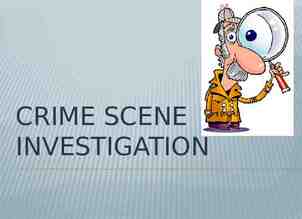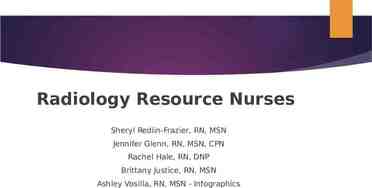Providing Effective Feedback Coaches & Principals 1
23 Slides140.50 KB
Providing Effective Feedback Coaches & Principals 1
Think-Pair-Share: How do you provide feedback to teachers after an observation? How do you debrief with teachers? What strategies have been particularly effective? What are some challenges you’ve had with providing feedback? 2
The Coaching Cycle Identify Groups to Observe: 5-Minute Observations Review of Written Data Follow Up Conduct Observations Provide Feedback / Identify and Apply Remedies 3
The Feedback/Follow-up Loop Follow Up Follow-up with Observations and Provide Feedback steps Provide Feedback: 3 Student-Focused “Keepers” Identify Remedies: 1 Student-Focused “Polisher” Apply Remedies: Provide Support (Apply remedies) – Desired Student Behavior – Teacher behavior that will elicit student behavior – Model teaching Provide Feedback / Identify and Apply Remedies 4
Methods for Providing Feedback Written Feedback Verbal Feedback (immediate) Verbal Feedback (delayed) 5
General Format for Providing Feedback Thank you 3 “Keepers” (Student Focused) – The students because you 1 “Polisher” (Student Focused) – It’s important that students ; in order to do that, try 6
Providing Feedback: Thank You What: Thank teacher for opportunity to observe, welcoming you in their classroom, etc. Why: Ensures teacher feels honored, builds rapport leaving teacher more open to receive and respond to feedback 7
Providing Feedback: 3 Keepers What: 3 Keepers (Student Focused) – The students because you Why: – 3:1 ratio is critical to promoting positive and responsive school culture – Increases the likelihood that teachers sustain effective practices – Builds rapport – Increases likelihood teacher will hear and respond to “polisher” will 8
Partner share Partner A: why are “Thank-yous” and “Keepers” important in providing feedback? Partner B: – add to partner A’s response and – How have you/do you plan to use “Thank yous” and “Keepers” when providing feedback? Partner A: add to partner B’s response 9
Providing Feedback: 1 Polisher What: 1 Polisher (Student Focused) – It’s important that students ; in order to do that, try Why: – Limits focus for growth to manageable number of tasks – Provides clear teacher practice to improve instruction – Provides rationale for implementing recommendation – Links rationale to student outcomes (keeps focus on students) 10
Practice Observe this lesson, selecting one or more of the 9 general features of instruction to provide feedback – Identify your “thank you” statement – Identify 3 keepers on which to provide feedback – Identify 1 polisher 11
Practice Give feedback to your partner – Partner B – provide feedback to partner A as if partner A was the teacher who had taught the lesson – Partner A – tell partner B what elements of giving effective feedback were incorporated (keepers). Give partner B a polisher for providing more effective feedback 12
Providing Feedback: Special Considerations When providing feedback in writing: – May limit written feedback to only “Keepers” – Try to provide feedback as immediately as possible – Only provide polishers in writing after they have been discussed verbally Why: – Immediate feedback reduces anxiety – Writing is a more permanent record of feedback; ensures that the teacher can reflect on a positive coaching interaction 13
Providing Feedback: Special Considerations When providing feedback Verbally (Immediately): – This option is helpful when doing coach & principal walkthroughs – Check for understanding: ask teacher to repeat back positive feedback before giving growth statement – Make sure to describe the desired behavior and have coach or principal model it (while other person provides whisper coaching) Why: – Gives an immediate model of effective teaching – Ensures the teacher “hears” positive feedback – Increases the likelihood that the teacher clearly understands how to implement the more effective teaching practice. 14
Providing Feedback: Special Considerations When providing feedback Verbally (Delayed): – Give feedback as soon after the observation as possible – Check for understanding: ask teacher to repeat back positive feedback before giving growth statement – Make sure to describe the desired behavior and offer to model it – May create a checklist or key features for teacher to observe so they attend to the relevant features of the model Why: – Still provides a model of effective teaching – Ensures the teacher “hears” positive feedback – Increases the likelihood that the teacher clearly understands how to implement the more effective teaching practice. 15
Providing Feedback: Special Considerations When providing feedback Verbally (Delayed): – May have teacher first reflect on her “keepers” and “polishers” Why: – Promotes self reflection – May open the door to coaching without you providing any feedback – Builds rapport and demonstrates respect for the teachers appraisal of his/her own teaching 16
Providing Feedback: Special Considerations When providing feedback Verbally (Delayed): – Coaches may not provide polisher (must be done by principals if coaches don’t identify polishers) Why: – Ensures that coach maintains a “helper” role instead of “evaluator” 17
Practice Observe this lesson, selecting one or more of the 9 general features of instruction to provide feedback – Identify your “thank you” statement – Identify 3 keepers on which to provide feedback – Identify 1 polisher 18
Practice Give feedback to your partner – Partner A – provide feedback to partner A as if partner A was the teacher who had taught the lesson (may incorporate a “special consideration” like having the teacher debrief first). – Partner B – tell partner A what elements of giving effective feedback were incorporated (keepers). Give partner A a polisher for providing more effective feedback. 19
Providing Feedback: Principal Specifics What: Expectation – Set instructional target: “I want to see ” – “On my next observation I’ll be looking for ” Why: – Sets clear expectation that staff implement best practice – Lets staff know it is important that recommendation is implemented will 20
Providing Feedback: Principal Specifics What: Offer support – You can talk to the coach to help you or I’d like you to talk with the coach to help you Why: – Opens door for coaching – Increases support and likelihood teacher will be successful in improving instruction 21
Providing Feedback: Principal Specifics What: Follow-up – Complete next observation and – Provide keeper and polisher focusing on previously set target Why: – Increases the likelihood that good instructional practice will be implemented – Provides opportunity to provide positive feedback to teacher for implementation – Increases rapport and positive school climate 22
Your goals for feedback Write the critical elements for giving effective feedback Check the items you already do Circle one item you would like to try or like to do more when providing feedback 23




























